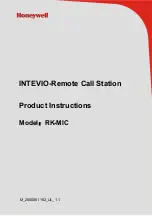
like close miking, especially with vocalists or certain types of per-
cussion and wind instruments.
Applications
The Royer Labs model R-122 is a versatile microphone and is ide-
ally suited for many critical recording applications. Its smooth
frequency response characteristics and ability to capture detail
make it a fine choice for many instruments, as well as for general
broadcast applications. Its gentle low-frequency proximity effect
make it especially useful for vocalists and announcers. Female
vocalists often benefit from the R-122’s ability to capture high fre-
quencies without distortion or edginess. Orchestral instruments
are captured in a natural sounding way, free from microphone-
induced “hype”. The R-122 has exceptionally smooth high fre-
quency characteristics and is devoid of microphone induced ring-
ing. Phase-related distortion and irregular frequency peaks are
conspicuously absent. These features make the R-122 ribbon mi-
crophone an ideal choice for strings, woodwinds, percussion and
amplified instruments. Theater organs and electric guitar amplifi-
ers sound big and fat, without unnatural coloration, when recorded
with the R-122. Acoustic pianos can be captured accurately with-
out the comb-filtering effects associated with condenser micro-
phones.
Digital recordings benefit greatly from the properties inherent in
ribbon microphones. Since A to D converters cannot distinguish
between the sound source being recorded and the complex distor-
tion components associated with condenser microphones, they
sometimes have difficulty tracking the signal, resulting in ringing
and edgy sounding tracks. With ribbon microphones, ringing is al-
most non-existent due to the ribbon’s lack of distortion artifacts
and high frequency peaks. A to D converters have less difficulty
tracking the ribbon generated signal, resulting in very smooth digi-
tal recordings free of microphone related edginess.
User Guide
Using The R-122 Active Ribbon Microphone
4
Summary of Contents for R-122
Page 28: ...Notes 27 ...






































